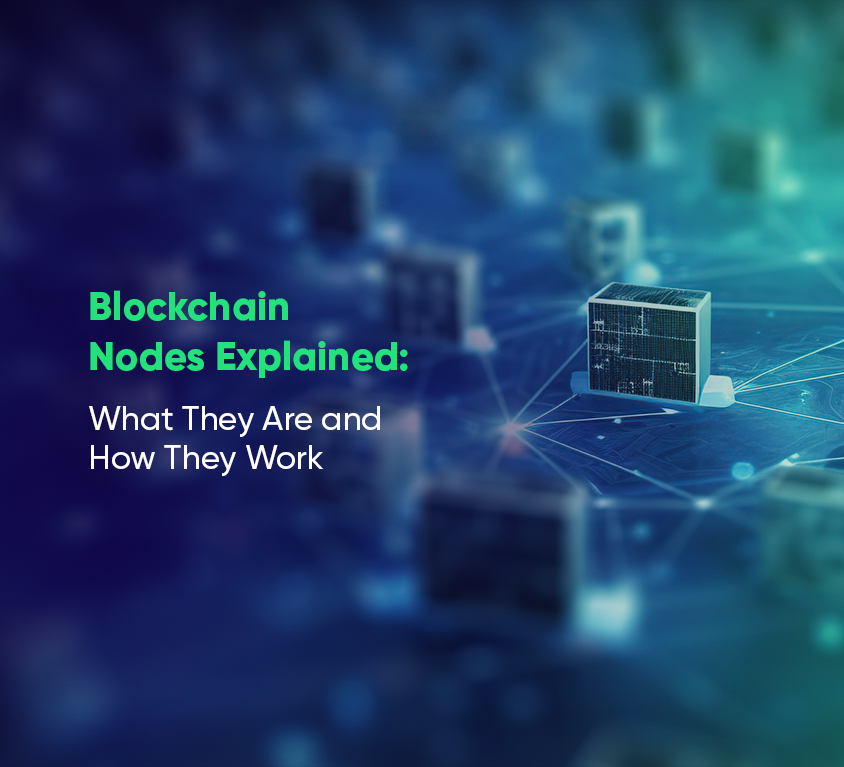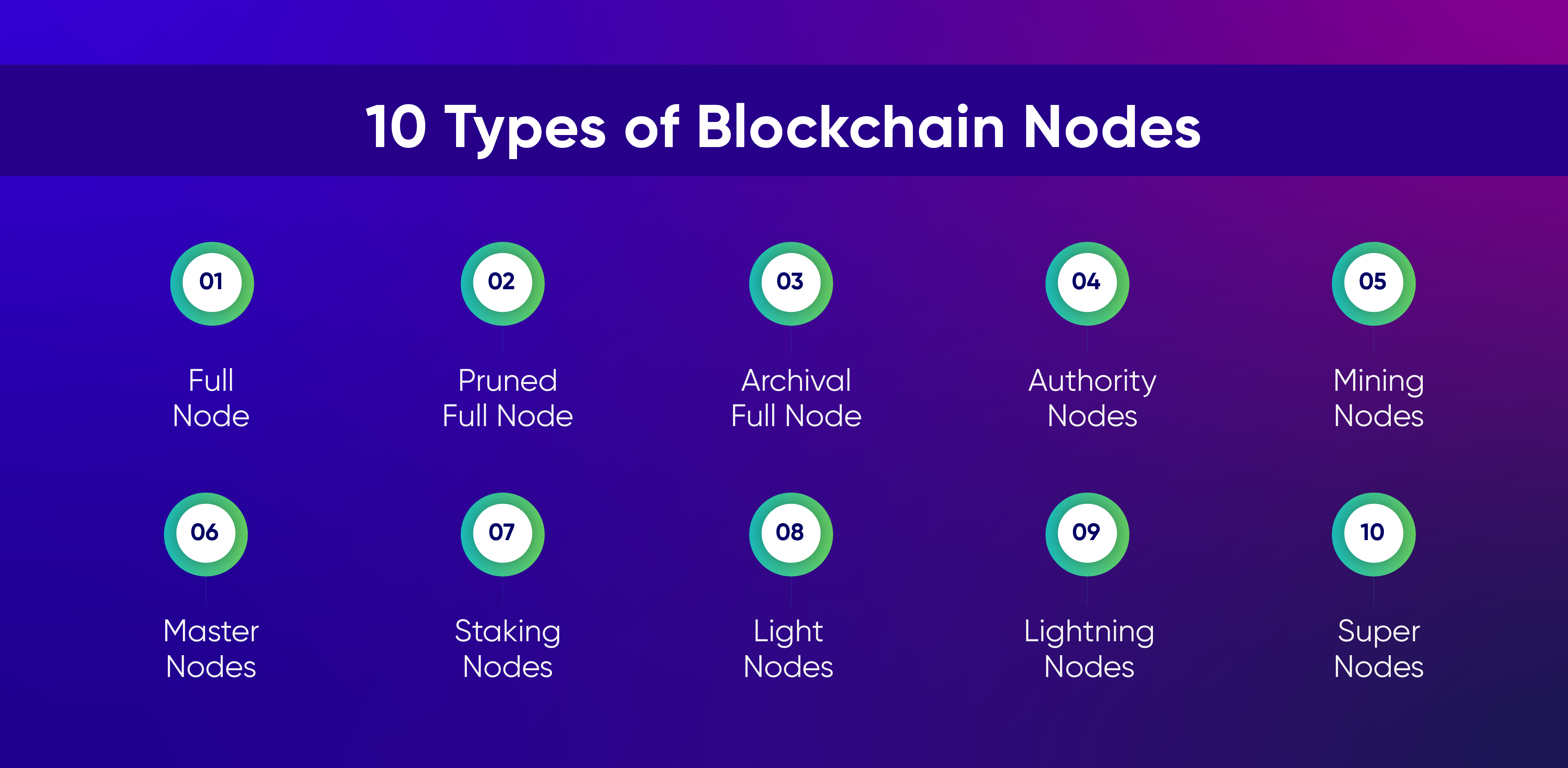
Introduction
Web3 & Blockchain Consultancy :
Blockchain Nodes Explained: What They Are and How They Work
A blockchain node is any device that runs the blockchain’s software and connects to its network. Nodes help support the structure of a decentralized system, serving as key participants in the blockchain. Their main role is to keep the blockchain’s shared ledger accurate and consistent, though the specifics of how they do this can differ depending on the type of node.Key Takeaways
- Nodes are essential for the decentralized operation and security of blockchain networks.
- Blockchain nodes validate transactions without relying on a central authority.
- A blockchain can function with one node, but multiple nodes improve stability and security.
- Full nodes store the entire blockchain ledger and transaction history.
- The more nodes a blockchain has, the more decentralized and secure the network becomes.
- Bitcoin has one of the largest node networks, with over 50,000 active nodes in 2024.
- Different types of nodes, like full nodes and validator nodes, serve distinct roles within the blockchain.
- Running a node helps maintain the integrity and fairness of a blockchain.
- Nodes play a critical role in enforcing the rules and ensuring participants follow protocol.
- Understanding how nodes work is key to understanding the foundation of blockchain technology.
What is a node in blockchain?
To understand what is a node in blockchain, it’s important to first break down what a blockchain is. In simple terms, blockchains are decentralized, unchangeable digital records shared across a peer-to-peer network. As a kind of database, transaction data is permanently saved, stored, and encrypted in “blocks” that are linked together in a “chain.” The physical devices (usually computers) that store copies of this chain and help keep the blockchain running are known as nodes. “At its core, a node is just a device running the software for a specific blockchain,” said Till Wendler, co-founder of Peaq, a blockchain platform designed to power the Economy of Things. Stanislav Zhdanovich, a blockchain developer at MetaLamp, explained that connecting to a blockchain network is similar to browsing the Internet. He likened nodes to web browsers because they understand the network’s specific protocol, allowing them to communicate with other nodes. Zhdanovich also emphasized that participating in a blockchain network is voluntary. There’s nothing at risk, and any node can leave the network at any time.How Do Blockchain Nodes Work?
Blockchain nodes serve three key functions: maintenance, validation, and accessibility.Nodes Handle Blockchain Maintenance
Nodes act as guardians of the blockchain, ensuring all copies of the ledger are kept in sync. They store encrypted data from past transactions and take on new blocks to support the network’s growth.Nodes Validate Transactions and Proposals
Nodes are programmed to verify transactions using a consensus algorithm. Peer nodes either approve or reject proposals. Approved transactions are added to the blockchain, copied, and shared across the network, while rejected ones are discarded. Consensus mechanisms ensure that all nodes remain in the agreement, processing new blocks in real time and updating the ledger instantly. This allows nodes to reflect the accurate state of the network at all times.Nodes Store Blockchain Data and Ensure Transparency
Nodes function as data storage units for the blockchain. Anytime a user within the network requests information, they are interacting with a node. These nodes are fully transparent and accessible to anyone within the network. Till Wendler uses Polkadot as an example, an open-source, layer-0 blockchain that serves as the foundation for layer-1 blockchains, known as parachains, running on top of the main relay chain. Polkadot features unique collator nodes, which sync parachains with the relay chain and facilitate communication between them. These collator nodes run both a full node of their respective parachain and a full node of the relay chain simultaneously. Polkadot’s network consists of several types of nodes. While collator nodes act as intermediaries, validator nodes support consensus, ensuring transaction records are accurate and up-to-date. Both of these nodes rely on archival nodes, which store the full transaction history of the network. “These collator nodes are essential for enabling communication between the parachains and the relay chain, as well as across the entire network,” Wendler explains. He emphasizes that interoperability is a critical feature in the Web3 space, allowing users to access a wide range of decentralized applications across various networks. “Polkadot’s built-in interoperability sets it apart, and this capability is a key reason why our company operates on a parachain.”Why Are Blockchain Nodes Important?
In a blockchain, there is no central authority. Instead, control is spread across a network of selected nodes. These nodes work together to handle essential functions like verifying transactions and carrying out decision-making processes. Additionally, all tokens and smart contracts on a blockchain exist within nodes. Without them, the entire structure of a blockchain would collapse. “Nodes are the backbone of a blockchain’s truth,” said Nicholas Edmonds, lead blockchain engineer at Topl, a company developing blockchain applications that track and monetize sustainability in industries. By distributing control among many nodes, blockchains maintain their decentralized nature. The more nodes a blockchain has, the more decentralized and secure it becomes. A large number of nodes strengthens the network, making it harder for any malicious actor to gain control by outnumbering the honest participants. This high node count enhances the network’s resilience.10 Types of Blockchain Nodes
Blockchain nodes are categorized based on their specific roles. Despite their varying functions, they all work together to maintain the integrity of the network. Stanislav Zhdanovich, a blockchain developer with experience in creating the Cardano platform, explained that developers consider two key factors when designing a blockchain: the nodes that will manage it. First, a single blockchain protocol often requires multiple types of nodes, each playing a different but complementary role within the network. For example, a seven-node network might consist of four computers, a router, a printer, and a remote device, all depending on the blockchain’s unique requirements. Second, nodes vary in their level of participation. Some store the entire history of the blockchain, while others contribute only part of their storage. This means not all nodes are created equal.
-
Full Node
Full nodes are the backbone of decentralized networks. They store a blockchain’s entire transaction history, sync data, and validate new blocks. These nodes ensure the blockchain remains secure and trustworthy by continuously enforcing the rules.
There are two types of full nodes: pruned and archival.
-
Pruned Full Node
A pruned full node has a set memory limit. After downloading the entire blockchain, it begins deleting older data (except metadata to maintain order) to free up space. It keeps only the most recent information, prioritizing security over storage.
-
Archival Full Node
Archival full nodes store the complete history of the blockchain, from the very first block. These are the most common nodes, and they can be further divided into four categories: authority nodes, mining nodes, staking nodes, and master nodes.
-
Authority Nodes
Authority nodes are selected by the community to moderate private or semi-centralized blockchains.
-
Mining Nodes
Mining nodes validate transactions through a proof-of-work consensus, solving complex cryptographic puzzles to add new blocks and earn cryptocurrency. These miners compete against each other using high-powered computing devices. For example, Bitcoin uses this method, rewarding miners with Bitcoin for solving blocks. The reward halves every four years, or after 210,000 new blocks are created. Miners often form groups, known as mining pools, to increase their chances of earning rewards.
Miners vs. Nodes
While both miners and nodes verify transactions, miners have the additional ability to create new blocks and earn rewards, usually in tokens. Nodes, on the other hand, typically act as servers that store and distribute transaction data.
-
Master Nodes
Master nodes validate transactions and maintain records but do not create new blocks.
-
Staking Nodes
These nodes use a proof-of-stake model to authenticate transactions. Participants “stake” a certain amount of tokens or meet other conditions to gain the ability to validate transactions. The more tokens staked or the longer they have been active, the higher the chance they’ll be chosen to authenticate blocks.
-
Light Nodes
Light nodes, the second most common type, are designed for quick, simple transaction processing. They only store the essential data and rely on full nodes to operate, as they don’t download the entire blockchain.
-
Lightning Nodes
Lightning nodes help reduce network congestion by processing transactions off-chain through external connections. These transactions are then added to the main blockchain, enabling faster and cheaper exchanges while easing the load on the network.
-
Super Nodes
Super nodes are rare and are created to perform specific tasks, such as implementing protocol changes or maintaining network protocols.